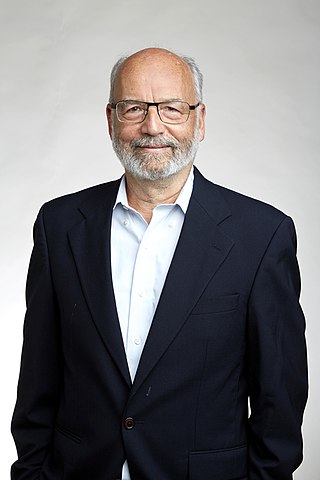Related Research Articles

Cryptanalysis refers to the process of analyzing information systems in order to understand hidden aspects of the systems. Cryptanalysis is used to breach cryptographic security systems and gain access to the contents of encrypted messages, even if the cryptographic key is unknown.
In cryptography, key size or key length refers to the number of bits in a key used by a cryptographic algorithm.

The Data Encryption Standard is a symmetric-key algorithm for the encryption of digital data. Although its short key length of 56 bits makes it too insecure for modern applications, it has been highly influential in the advancement of cryptography.
Differential cryptanalysis is a general form of cryptanalysis applicable primarily to block ciphers, but also to stream ciphers and cryptographic hash functions. In the broadest sense, it is the study of how differences in information input can affect the resultant difference at the output. In the case of a block cipher, it refers to a set of techniques for tracing differences through the network of transformation, discovering where the cipher exhibits non-random behavior, and exploiting such properties to recover the secret key.

In cryptography, encryption is the process of encoding information. This process converts the original representation of the information, known as plaintext, into an alternative form known as ciphertext. Ideally, only authorized parties can decipher a ciphertext back to plaintext and access the original information. Encryption does not itself prevent interference but denies the intelligible content to a would-be interceptor.

Symmetric-key algorithms are algorithms for cryptography that use the same cryptographic keys for both the encryption of plaintext and the decryption of ciphertext. The keys may be identical, or there may be a simple transformation to go between the two keys. The keys, in practice, represent a shared secret between two or more parties that can be used to maintain a private information link. The requirement that both parties have access to the secret key is one of the main drawbacks of symmetric-key encryption, in comparison to public-key encryption. However, symmetric-key encryption algorithms are usually better for bulk encryption. With exception of the one-time pad they have a smaller key size, which means less storage space and faster transmission. Due to this, asymmetric-key encryption is often used to exchange the secret key for symmetric-key encryption.

Adi Shamir is an Israeli cryptographer and inventor. He is a co-inventor of the Rivest–Shamir–Adleman (RSA) algorithm, a co-inventor of the Feige–Fiat–Shamir identification scheme, one of the inventors of differential cryptanalysis and has made numerous contributions to the fields of cryptography and computer science.

Daniel Julius Bernstein is an American mathematician, cryptologist, and computer scientist. He is a visiting professor at CASA at Ruhr University Bochum, as well as a research professor of Computer Science at the University of Illinois at Chicago. Before this, he was a visiting professor in the department of mathematics and computer science at the Eindhoven University of Technology.
Articles related to cryptography include:
In cryptography, an S-box (substitution-box) is a basic component of symmetric key algorithms which performs substitution. In block ciphers, they are typically used to obscure the relationship between the key and the ciphertext, thus ensuring Shannon's property of confusion. Mathematically, an S-box is a nonlinear vectorial Boolean function.
The following timeline of algorithms outlines the development of algorithms since their inception.

Vincent Rijmen is a Belgian cryptographer and one of the two designers of the Rijndael, the Advanced Encryption Standard. Rijmen is also the co-designer of the WHIRLPOOL cryptographic hash function, and the block ciphers Anubis, KHAZAD, Square, NOEKEON and SHARK.
Cryptography, the use of codes and ciphers to protect secrets, began thousands of years ago. Until recent decades, it has been the story of what might be called classical cryptography — that is, of methods of encryption that use pen and paper, or perhaps simple mechanical aids. In the early 20th century, the invention of complex mechanical and electromechanical machines, such as the Enigma rotor machine, provided more sophisticated and efficient means of encryption; and the subsequent introduction of electronics and computing has allowed elaborate schemes of still greater complexity, most of which are entirely unsuited to pen and paper.
MARS is a block cipher that was IBM's submission to the Advanced Encryption Standard process. MARS was selected as an AES finalist in August 1999, after the AES2 conference in March 1999, where it was voted as the fifth and last finalist algorithm.
Below is a timeline of notable events related to cryptography.

Jacques Stern is a cryptographer, currently a professor at the École Normale Supérieure. He received the 2006 CNRS Gold medal. His notable work includes the cryptanalysis of numerous encryption and signature schemes, the design of the Pointcheval–Stern signature algorithm, the Naccache–Stern cryptosystem and Naccache–Stern knapsack cryptosystem, and the block ciphers CS-Cipher, DFC, and xmx. He also contributed to the cryptanalysis of the SFLASH signature scheme.

Cryptography, or cryptology, is the practice and study of techniques for secure communication in the presence of adversarial behavior. More generally, cryptography is about constructing and analyzing protocols that prevent third parties or the public from reading private messages. Modern cryptography exists at the intersection of the disciplines of mathematics, computer science, information security, electrical engineering, digital signal processing, physics, and others. Core concepts related to information security are also central to cryptography. Practical applications of cryptography include electronic commerce, chip-based payment cards, digital currencies, computer passwords, and military communications.
The following outline is provided as an overview of and topical guide to cryptography:

Hugo Krawczyk is an Argentine-Israeli cryptographer best known for co-inventing the HMAC message authentication algorithm and contributing in fundamental ways to the cryptographic architecture of central Internet standards, including IPsec, IKE, and SSL/TLS. In particular, both IKEv2 and TLS 1.3 use Krawczyk’s SIGMA protocol as the cryptographic core of their key exchange procedures. He has also contributed foundational work in the areas of threshold and proactive cryptosystems and searchable symmetric encryption, among others.
References
- 1 2 Coppersmith, Don (May 1994). "The Data Encryption Standard (DES) and its strength against attacks" (PDF). IBM Journal of Research and Development. 38 (3): 243–250. doi:10.1147/rd.383.0243. Archived from the original (PDF) on 2009-03-25.
- ↑ Coppersmith, D. (1994). "An approximate Fourier transform useful in quantum factoring". Technical Report RC19642, IBM.
- ↑ "Putnam Competition Individual and Team Winners". Mathematical Association of America . Retrieved December 13, 2021.
- ↑ "Welcome to our monthly puzzles" . Retrieved 2018-01-05.
The current puzzlemaster is Oded Margalit. He took over from James B. Shearer, who took over from the original puzzlemaster Don Coppersmith, in October 2005.
- ↑ Coppersmith, Don; Wu, Chai Wah (2008-12-01). "Conditions for weak ergodicity of inhomogeneous Markov chains". Statistics & Probability Letters. 78 (17): 3082–3085. doi:10.1016/j.spl.2008.05.012.
- ↑ "Don Coppersmith Wins RSA Security Award for Mathematics". 2002-02-19. Archived from the original on 2017-01-27. Retrieved 2018-01-05.
- ↑ "RSA Security Announces 2002 Award Recipients; Awards Recognize Major Contributions in Mathematics, Public Policy and Industry". 2002-02-19. Archived from the original on 2018-01-05. Retrieved 2018-01-05.
- ↑ "The Levchin Prize for Real-World Cryptography". Real World Crypto Symposium. International Association for Cryptologic Research. Retrieved 9 April 2024.